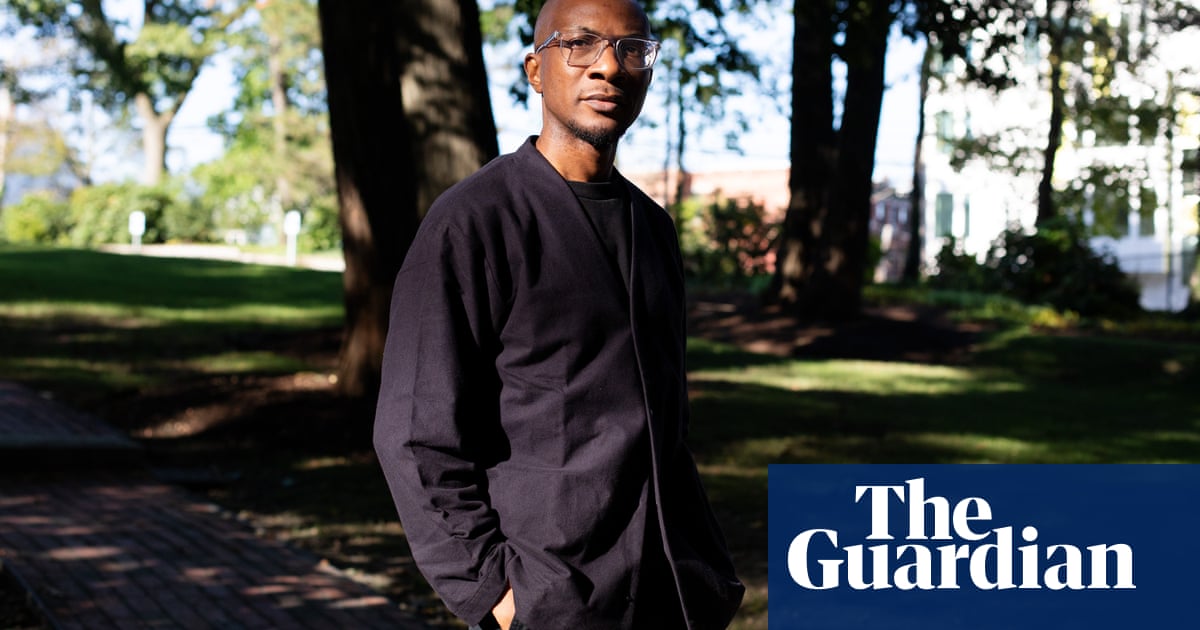The book review for “Tremor” by Teju Cole explores the intersection of art, history, and violence.

A
As our perception of the past evolves, how can we reassess, engage with, and appreciate art? How can we produce new art that acknowledges the past but is not weighed down by it? These artistic inquiries are at the core of Teju Cole’s captivating third novel, a remarkable display of storytelling exploring literature, painting, music, photography, race, the concept of time, and humanity’s ability to persevere through the harsh realities of history.
Tunde, a professor of photography from Nigeria who teaches at Harvard, enters an antique store in Maine and notices “a variety of wooden masks and sculptures, three of which are clearly African”. He also spots a “small photocopied note” mentioning a colonial estate that was “attacked by Native Americans” and later taken over by the Wells family. As Tunde ponders the complicated colonial past, he draws connections between Bach’s Cello Suites and the western film The Searchers, starring John Wayne as a Civil War veteran; and Pius Mau Piailug’s traditional navigation skills without instruments with the popular Hollywood movie Ad Astra. These connections are not arbitrary and urge us to reconsider the hierarchy of fine art versus popular art, the dominance of Western aesthetic values, and the problematic portrayal of truth and history.
Released 12 years after his previous novel Open City, Tremor is a complex historical puzzle, a personal compilation of noteworthy works of art, a photographic essay depicting the lives and struggles in Lagos, and a captivating discussion on topics such as racism, origin, decolonization, and restitution. At its core, the story follows the emotional journey of Tunde and his partner Sadoko as they navigate their relationship and the ups and downs of life. Through their moments of silence and longing for physical connection, the author explores the themes of separation, intimacy, time, and mortality, and the various turbulent experiences that shape our existence.
Can a book encompass multiple genres and a wealth of knowledge without being ostentatious? The writing style of Cole is composed and reflective, progressing subtly as if the narrator merely serves and watches, never controlling. It possesses a mesmerizing, transporting essence, displaying a mental dexterity that feels more like instinctual movement than random connections.
Similar to how a madeleine triggers memories for Proust’s narrator, an ose dudu serves as a key to unlock memories for Cole. However, this is not just any African black soap. In the book Tremor, the ose dudu plays a significant role in Nigerian artist Otobong Nkanga’s project that explores various forms of art and activism. The profits from this project contribute to the building of an art foundation in Nkanga’s ancestral home. As Tunde showers, the scent of ose dudu takes him back to his childhood in Ojodu, Lagos. It reminds him of the harsh living conditions under a military dictatorship and the loss of a houseboy to lung disease. Through Tunde’s memories, Cole delves into the impact of our actions and inactions and highlights Nkanga’s art and activism, which have the potential to address and rectify historical wrongs and create a better future for the local community.
At 256 pages, Tremor encompasses centuries of artworks and spans continents to explore the human experience. It has a broad perspective but maintains a focused examination of brutality and justice. One standout moment is Tunde’s chilling lecture on the Benin bronzes, which reflects on the 1897 massacre by the British army. Tunde juxtaposes 15th-century Nigerian art with Turner’s “Slavers Throwing Overboard the Dead and Dying” and Herri met de Bles’s enigmatic “Landscape With Burning City.” Tunde notes, “We have not been taught to value the life-worlds of others, their autonomy, their ancestral rights,” highlighting the lack of appreciation for others’ cultures. He also describes experiencing the museum as a continuous shock, causing a sense of moral disorientation.
Tunde journeys to Nigeria during the middle of Tremor, leading us through various neighborhoods in Lagos where there is a constant struggle with poverty, crime, and corruption, yet there are also displays of compassion and ambition – such as a driver caught in a land dispute, an artist capturing endangered species, and a teacher establishing a school for the hearing impaired. Like Tunde, Cole is a skilled photographer and has previously released a photobook called Blind Spot. In Tremor, he expertly selects and presents flash fiction portraits, constructing a vibrant Nigerian city teeming with danger and charm.
Despite its highly conceptual nature, Tremor is a deeply moving and poignant novel. The challenges faced by Tunde and Sadoko keep us on edge throughout the story. Despite never explicitly mentioning the word “tremor,” Cole effectively portrays the tremulous agitation and excitement between the characters and their friends, some of whom have passed away and others who may be facing their own mortality. As I read, I found myself compelled to further explore the paintings, songs, and historical references that are intertwined with the characters’ lives. Tunde’s observation that “the future is a series of ever less clear tomorrows” captures the essence of this book, which broadens and unsettles our understanding of 21st-century life with its vivid portrayal of the underlying tremors beneath our shared experiences and cultures.
Move past the advertisement for the newsletter.
after newsletter promotion
Source: theguardian.com


